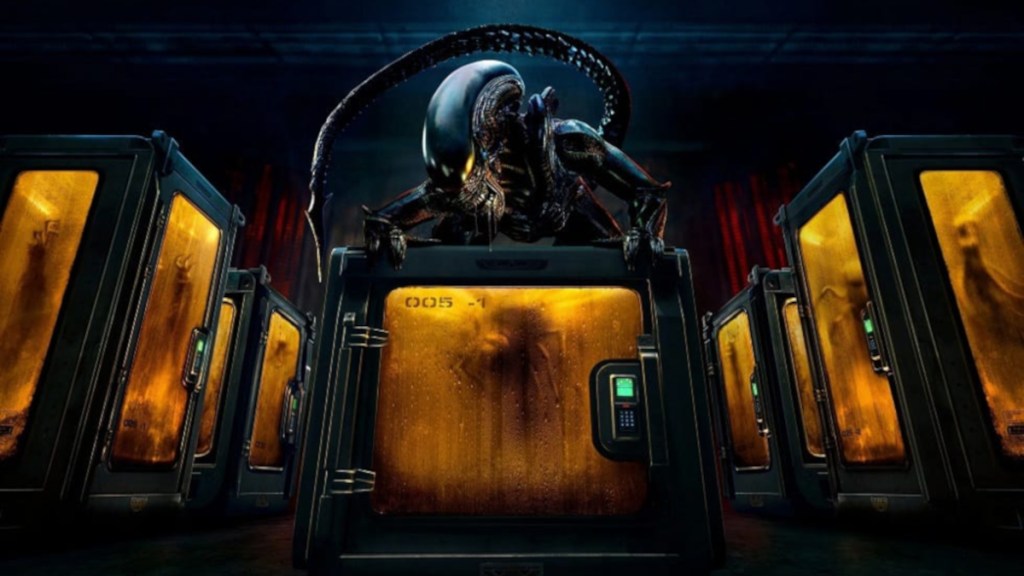Alien: Earth has been more than an Alien TV show: creator Noah Hawley has put together an entire seminar on how to take a long-established franchise IP and blow it out in new-but-familiar directions. The series is set as a prequel to the original Alien (1979) movie, which may seem limiting at first. However, Hawley uses the premise of a spaceship crashing on Earth as the major catalyst for so many new sociopolitical themes and spine-tingling horror concepts that the series already feels more dense and richly layered than your average Alien movie.
That all said, there are two specific changes that Alien: Earth is making to Alien franchise lore that I think are great. Not only are they great, in my opinion, but they’re conceptual changes that could vastly improve future Alien projects.
“Alien” Can Have More Than One Nightmare Monster

The xenomorphs are the iconic mascots of the Alien franchise, with good reason. The creature designs by H.R. Giger are legendary in their ability to unnerve us: the elongated eyeless head, the black skin, and a second protruding mouth inside the translucent-toothed mouth. Combined with the “life cycle” of a facehugger parasite “impregnating” a host, and the chestburster “birth” moment, it’s hard to imagine a more horrific creation that combines so many types of horror (creature, body, slasher, psychological) into a sick brew. But Noah Hawley has managed to find a way – several ways, in fact.
Alien: Earth has given us plenty of new reasons to wake up in a flop sweat – and has pulled on a lot of the same levers as the xenomorphs, to do it. The ‘Eyeball’ monster has certainly become a breakout favorite; it’s given the franchise a monster that is also a mastermind, but is also a physical threat, depending on its choice of host body. Behind the Eye, we’ve seen the “Ticks,” a race of alien bugs that nest inside a body, siphoning blood from its host. The Ticks can also spew clouds of poison powerful enough to kill an entire room, and can take down an active adult. If one facehugger/xenomorph drone is a threat, a swarm of Ticks already seems like it would be a calamity. We’re still getting to know the ‘Flower monster’ creature and “The Flies” that debuted in Episode 6, but the latter has already proven to be a game-changer, as they’re a species that feeds on metallic and plastic materials – including synthetics.
Look, I get it: Not every Alien fan is enjoying what Hawley is doing with Alien: Earth. But that’s not the argument here. Even if you don’t enjoy what Alien: Earth is doing with its specific story, it’s hard to ignore that Hawley has touched upon an idea the franchise should consider: adding more monsters. Future films about expeditions to find or combat xenomorph hives could easily incorporate rival species into the mix; in fact, it’s almost crazier that it took this long for the idea to be broached. If Weyland-Yutani wants specimens as bio-weapons, stopping at one species seems unrealistic: like Pokémon, they’d want them all.
Humans, Machines & Everything In Between

Hawley hasn’t just blown out the idea of more nightmare creatures lurking in the dark of space: He’s also introduced the notion of there being more complex forms of machine life that exist in this futuristic world. Up until now, Alien films had wedged “synthetics” (read: androids) in the middle of human vs. xenomorphs struggles; Alien: Earth has blown out the concept to include the obvious additions of cyborgs (humans with machine parts), and the whole series hinges on the creation of a new form of machines known as “hybrids,” which allow for human consciousness to be uploaded to android bodies.
By also expanding this corner of the Alien universe, Hawley has not only introduced interesting new concepts about the nature of humanity and existence (are hybrids still “human” at all?), but he’s also given Alien a whole new opportunity to include machine-enhanced humans as protagonists in future films. Synths (except for Michael Fassbender’s David) are limited by the leash of their programming; cyborgs retain human will, but can fight with machine power; hybrids are arguably the most formidable protagonists the franchise could tap for a future project, and can also convey more gray-toned themes about what is “human” or not when dealing with alien species.
All in all, I don’t think Alien: Earth has to be perfect on its own merits to be a success for the franchise. The ideas that Noah Hawley has seeded into the IP are ripe for growth, should future filmmakers (or TV showrunners) choose to water them.
What do you think? Leave a comment below. Want to stay up to date on the biggest geek entertainment news? Add us as a preferred source in Google – HERE, and join our community over on the ComicBook Forum!
Alien: Earth is streaming on FX-Hulu.


